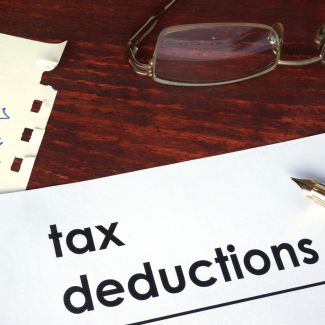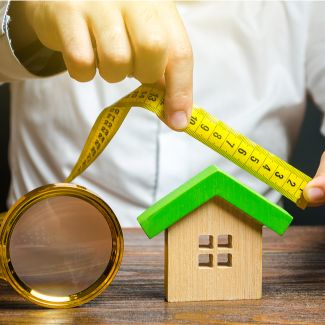Table of Contents
Quality Service Guarantee Or Painting Free

Get a rental agreement with doorstep delivery

Find the BEST deals and get unbelievable DISCOUNTS directly from builders!

5-Star rated painters, premium paints and services at the BEST PRICES!
Loved what you read? Share it with others!


Submit the Form to Unlock the Best Deals Today
Check Your Eligibility Instantly

Experience The NoBrokerHood Difference!
Set up a demo for the entire community
Section 80EE: The Ins and Outs of Purchasing Your First House
Table of Contents
When you start paying taxes, some say that’s when you’ve entered adulthood or the real world. And as much as we’d like to rewind the clock and be a child again, I guess there are some things we just have to do.
All citizens pay taxes as it is our responsibility. The government uses these taxes to fund and create development and growth policies and initiatives for our benefit. For us citizens, the government offers concessions on important investments like health insurance policies, pension schemes, life insurance policies and home loans. Under tax deductions, the government offers on-home loans, under section 80EE. But how much do we know about the section 80EEwith Budget 2021 update: It has been proposed to exempt senior citizens from filing income tax returns if pension income and interest income are their only annual income sources. Section 194P has been newly inserted to enforce the banks to deduct tax on senior citizens more than 75 years of age who have a pension and interest income from the bank.
Purpose of Section 80EE: Section 80EE Income Tax Deduction on Home Loans
The interest component of a private house property loan obtained from any financial institution is eligible for income tax benefits under Section 80EE interest on a loan taken for residential house property. This part allows you to claim a deduction of up to Rs 50,000 per financial year. You can claim this deduction until the debt is completely paid off.
Quality Service Guarantee Or Painting Free

Get a rental agreement with doorstep delivery

Find the BEST deals and get unbelievable DISCOUNTS directly from builders!

5-Star rated painters, premium paints and services at the BEST PRICES!
What is Section 80EE?
Section 80EE states that tax deductions can be claimed by first-time homebuyers for the amount they had initially paid as interest on their home loan. According to Section 80EE of the Income Tax Act, rupees 50,000 is the maximum they can claim in tax deductions during the financial year. This amount can be claimed over and beyond the deduction of Section 24 and Section 80C, which are rupees 2,00,000 and rupees 1,50,000, respectively. One of the benefits is that you can continue to claim this deduction until you have fully repaid the loan. The main purpose behind Section 80EE is that it allows income tax benefits on the interesting part of the house property loan availed from the financial institution.

In order to claim the tax deductions under section 80EE, one must make sure that the following terms and conditions be met.
- These tax deductions can only be claimed on the first house that is purchased by the taxpayer.
- These deductions can only be claimed if the value of the house does not exceed rupees 50,00,000.
- The deduction is not going to be available to claim if the home loan taken exceeds Rs.35,00,000.
- This deduction is available to claim on the interest portion of the home loan
- It is necessary that the home loan be sanctioned by a recognized financial institution like a bank or a housing finance company.
- The individual using this deduction, cannot own another house at the same time.
- This deduction can only be used in the home loan is being used for residential properties, not commercial properties.
Additional tax benefits under Section 80EE
- Individuals are the only ones eligible for the deduction under this clause. This means that you cannot claim any advantage under sec 80ee of the income tax act if you are a HUF, AOP, corporation, or any other type of taxpayer.
- The deduction is limited to a maximum of Rs 50,000. It exceeds the Rs 2 lakh limit set forth in Section 24 of the Income Tax Act.
- Other requirements: To be eligible for section 80ee of the income tax act, you must not own any other residential property on the date the loan is approved by a financial institution.
Eligibility Criteria for Claiming Deduction Under Section 80EE
The eligibility for 80EE tax deductions is as per the following criteria: –
- If you take a joint home loan with your partner to purchase certain property and the instalments are paid by both of you; then both parties can each claim the tax deductions under this act.
- The tax benefits of the act are not applicable to Hindu Undivided Families, Association of Persons, companies, units and trusts, etc.
- This tax deduction is available to claim per person not per property.
- This tax deduction can be claimed even on a property that the taxpayer is renting out.
The government has extended the limit of deduction up to Rs. 1,50,000 according to the newly inserted section 80EEA of the Income Tax Act. As per this section, the tax deduction is available to claim only for individual residents and for the selected property that has a stamp value of less than Rs. 45 Lakhs.
With the initiative, “Housing for all”, the government has extended the tax deduction on interest for low-cost housing loans taken during the time span of the financial year -1 April 2019 and 31 March 2020. The government has introduced a new section 80EEA, so as to allow for an interest deduction from AY 2020-21.
Eligibility Criteria for Claiming Under Section 80EEA
The criteria for section 80EEA are quite similar to that of 80EE but there are a few changes.

- It is necessary that the home loan be sanctioned by a recognised financial institution like a bank or a housing finance company.
- The stamp duty value of the house should not exceed rupees 45 lakhs.
- The taxpayer cannot be eligible if he/she is claiming a tax deduction under section 80EE.
- Carpet area should not exceed 60 square meters in metropolitan cities of Bengaluru, Chennai, Delhi National Capital Region (limited to Delhi, Noida, Greater Noida, Ghaziabad, Gurgaon, Faridabad), Hyderabad, Kolkata and Mumbai (the whole of Mumbai Metropolitan Region)
- The carpet area of the house property should not exceed 90 square meters in any other cities or towns.
Section 80EEA has been implemented to extend the benefits of Section 80EE for low costing houses. Section 80EEA has not mentioned if you need to be a Resident or not to be able to claim this benefit. Hence, it can be said that both Resident and Non-Resident Indians can claim this deduction. The section also does not say if the house in question should be occupied by the taxpayer to claim the deduction. Moreover, the deduction can only be claimed by individuals for the house purchases jointly or singularly. Read more about Section 80EEA of the Income Tax Act here.
Section 24
Section 24 of the Income Tax Act basically states that homeowners can claim a deduction of up to Rs. 2 lakhs or Rs. 1,50,000 if you are filing returns for the last financial year on the interest of their home loan if the taxpayer resides in the house property. In short, the entire interest is waived off as a deduction when the house, in question, is on rent.
According to Section 24, the taxpayer is offered a flat 30 per cent deduction on the net annual value of a property. This is ‘nil’ in the case of self-occupied properties as per the Income Tax Act, no matter the payment of municipal tax or not. To make it simpler, if a taxpayer purchased a property, by using his own resources itself, without the assistance of housing finance and is earning some amount of income by giving the property on rent, he could claim 30% of every 100% earned. However, if the same property is self-occupied, the owner cannot avail of any deductions under Section 24.
Section 80EE and Section 24
Section 24 of the Income Tax Act basically states that homeowners can claim a deduction of up to Rs. 2 lakhs or Rs. 1,50,000 if you are filing returns for the last financial year on the interest of their home loan if the taxpayer resides in the house property.
In short, the entire interest is waived off as a deduction when the house, in question, is on rent.
Section 80EE states that tax deductions can be claimed by first-time homebuyers for the amount they had initially paid as interest on their home loan. According to Section 80EE of the Income Tax Act, rupees 50,000 is the maximum they can claim in tax deductions during the financial year.
If the taxpayer is able to meet the conditions of both sections, the individual can claim benefits under both of them. In order to claim these benefits, the individual will first need to exceed the limit under Section 24 and then later claim the additional benefit under section 80EE. Therefore, the deduction under Section 80EE is in addition to the limit of Rs. 2,00,000, as under Section 24.
So, to break it down for you so that you can have all the information on the topic in a single space, which you may save and then refer to for later use, go on and give the latter part of the article a read.
Features of Section 80EEA
Eligibility Criteria
The deduction under this section is available only to individuals. This deduction is not available to any other taxpayer. Thus, if you are a HUF, AOP, Partnership firm, company, or any other kind of taxpayer, you cannot claim any benefit under this section.
Amount of Deduction
A deduction for interest payments up to Rs 1,50,000 is available under Section 80EEA. This deduction is over and above the deduction of Rs 2 lakh for interest payments available under Section 24 of the Income Tax Act. Read more about the deduction of Rs 2 lakh on interest on a home loan here. Therefore, taxpayers can claim a total deduction of Rs 3.5L for interest on home loans, if they meet the conditions of section 80EEA.
Other Conditions
Similar to Section 80EE, in order to claim deduction under Section 80EEA, you should not own any other house property on the date of the sanction of a loan.
Conditions for Claiming the Deduction Under Section 80EEA
Key points to remember to avail of benefits under Section 80EE
- Housing loans must be taken from a financial institution or a housing finance company for buying a residential house property.
- The stamp duty value of the house property should be Rs.45 lakhs or less.
- The individual taxpayer should not be eligible to claim a deduction under the existing Section 80EE.
- The taxpayer should be a first-time home buyer. The taxpayer should not own any residential house property as on the date of sanction of the loan.
- Conditions with respect to the carpet area of the house property. These conditions have been specified in the memorandum to the finance bill, but not mentioned in section 80EEA:
- The carpet area of the house property should not exceed 60 square meters (645 sq ft) in metropolitan cities of Bengaluru, Chennai, Delhi National Capital Region (limited to Delhi, Noida, Greater Noida, Ghaziabad, Gurgaon, Faridabad), Hyderabad, Kolkata and Mumbai (the whole of Mumbai Metropolitan Region)
- The carpet area should not exceed 90 square meters (968 sq ft) in any other cities or towns.
- Further, this definition will be effective for affordable real estate projects approved on or after 1 September 2019
Section 80EEA has been introduced to further extend the benefits allowed under Section 80EE for low-cost housing. Earlier, Section 80EE had been amended from time to time to allow a deduction for interest paid on housing loans for FY 2013-14, FY 2014-15, and FY 2016-17. The section does not specify if you need to be a Resident to be able to claim this benefit. Therefore, it can be concluded that both Resident and Non-Resident Indians can claim this deduction. The section also does not specify if the residential house should be self-occupied to claim the deduction. So, borrowers living in rented houses can also claim this deduction. Moreover, the deduction can only be claimed by individuals for the house purchases jointly or singly. If a person jointly owns the house with a spouse and they both are paying the instalments of the loan, then both of them can claim this deduction. However, they must meet all the conditions laid down.
Difference between Section 80EEA and Section 24

The difference between 80ee and 24b is that, under Section 24, homeowners can claim a deduction for interest payments up to Rs 2 lakh on their home loan, if the owner or his family resides in the house property. The deduction of up to Rs 2 Lakh applies even when the house is vacant. If you have rented out the property, the entire home loan interest is allowed as a deduction. If you can satisfy the conditions of both Section 24 and Section 80EEA of the Income Tax Act, you can claim the benefits under both sections. First, exhaust your deductible limit under Section 24, which is Rs 2 lakh. Then, go on to claim the additional benefits under Section 80EEA. Therefore, this deduction is in addition to the Rs 2 lakh limit allowed under Section 24.
Things to Remember
- Section 80EE became effective in the 2013-14 fiscal year. It was only offered for two years, fiscal years 2013-14 and 2014-15. Previously, the deduction was limited to a total of Rs 1 lakh and was only accessible for two financial years.
- However, as of FY 2016-17, this part has been reinstated (AY 2017-18). Until the loan is repaid, the deduction is now limited to Rs 50,000 each year.
- It is unclear whether you must be a resident to receive this benefit. As a result, both resident and non-resident Indians are eligible to claim this deduction.
- The provision also makes no mention of whether the house must be self-occupied to qualify for the deduction. This benefit is also available to borrowers who live in rented homes.
- Individuals can also claim the deduction for housing purchases made jointly or individually. Both of them can claim this deduction if they jointly own the house with their spouse and are both paying the loan instalments
Difference between Sections 80EE and 80EEA
The new Section 80EEA in the Union Budget 2019 extends the tax benefits of the interest deduction up to Rs 1,50,000 for housing loans obtained for affordable housing between April 1, 2019, and March 31, 2020. The individual taxpayer should be a first-time homebuyer who is not eligible for the Section 80EE deduction.
80ee limit
80ee interest on loan taken for residential house property - The new Section 80 EEA in the Union Budget 2019 extends the tax benefits of the interest deduction up to Rs 1,50,000 for housing loans obtained for affordable housing between April 1, 2019, and March 31, 2020. The individual taxpayer should be a first-time homebuyer who is not eligible for the Section 80EE deduction. The home loan interest section has the same rules for 80ee deduction for May 2021-22.
If you do a little research, there are many ways to save up here and there, in different aspects of your first big investment. It’s scary jumping into those adult shoes, realizing you have to cut out your favourite pleasures for a future plan, but we’re here to help you with it. At NoBroker, our experts will guide you and ensure your paperwork is perfect. Click the link below to know more about NoBroker Legal services and we will also help you with your home loan. You can even drop us a comment below with any questions, and we’ll be happy to help.
FAQs About Section 80EE
Ans. Section 80EE eligibility criteria are as follows: –
1. If you take a joint home loan with your partner to purchase certain property and the instalments are paid by both of you; then both parties can each claim the tax deductions under this act.
2. The tax benefits of the act are not applicable to Hindu Undivided Families, the Association of Persons, companies, units and trusts, etc.
3. This tax deduction is available to claim per person not per property.
4. This tax deduction can be claimed even on a property that the taxpayer is renting out.
Ans. Taxpayers who are paying a housing loan can claim the tax deduction on interest payments of up to Rs 1,50,000 per annum under Section 80EEA.
Ans. The tax deduction that comes with section 80EE is only available to claim in the first house you are purchasing.
Ans. According to Section 80EE of the Income Tax Act, rupees 50,000 is the maximum they can claim in tax deductions during the financial year.
Ans. The criteria for section 80EEA are quite similar to that of 80EE, but there are a few changes.
1. It is necessary that the home loan be sanctioned by a recognized financial institution like a bank or a housing finance company.
2. The stamp duty value of the house should not exceed rupees 45 lakhs.
3. The taxpayer cannot be eligible if he/she is claiming a tax deduction under section 80EE.
4. Carpet area should not exceed 60 square meters in metropolitan cities of Bengaluru, Chennai, Delhi National
5. Capital Region (limited to Delhi, Noida, Greater Noida, Ghaziabad, Gurgaon, Faridabad), Hyderabad, Kolkata and Mumbai (the whole of Mumbai Metropolitan Region)
6. The carpet area of the house property should not exceed 90 square meters in any other city or town.
Ans. Section 80EE allows income tax benefits on the interest portion of the residential house property loan availed from any financial institution. You can claim a deduction of up to Rs. 50,000 per financial year as per this section.
Loved what you read? Share it with others!
Most Viewed Articles

Home Loan Interest Rates for All Banks in March 2025
March 4, 2025
32459+ views

SBI Home Loan Interest Rates - Updated in March 2025
March 4, 2025
27364+ views

SBI Home Loan Interest Certificate: Benefits, Offline and Online Options, Get via Yono App in 2025
January 31, 2025
26906+ views

ICICI Home Loan Interest Rates - Updated in March 2025
March 4, 2025
24350+ views

Top 10 Housing Finance Companies in India
January 31, 2025
18511+ views
Recent blogs in
Union Bank Home Loan Interest Rates - Updated in March 2025
March 4, 2025 by NoBroker.com
SBI Home Loan Interest Rates - Updated in March 2025
March 4, 2025 by Siri Hegde K
IDBI Home Loan Interest Rates - Updated in March 2025
March 4, 2025 by NoBroker.com
HDFC Home Loan Interest Rates - Updated in March 2025
March 4, 2025 by NoBroker.com






Join the conversation!